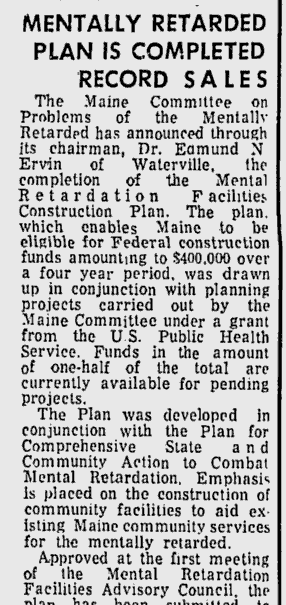In 1963, upon Kennedy’s urging, Congress would pass the Maternal and Child Health and Mental Retardation Planning Amendments, which would created funding for both services for children with disabilities and grants to “plan for and take other steps leading to comprehensive State and community action to combat mental retardation”. That same year, Congress would pass the Mental Retardation and Community Mental Health Centers Construction Act of 1963, providing funding for services in the community for people with developmental disabilities, as well as research, diagnostic clinics, and more funding for special education teachers. This Act established what were then known as University Affiliated Facilities to perform research and administrate the diagnostic clinics – today these are known as University Centers for Excellence in Developmental Disabilities (UCEDDs), in Maine, the Center for Community Inclusion and Disability Studies at the University of Maine. The law also created Mental Retardation Facilities Advisory Councils, in charge of supervising the money received from Federal aid and granted to organizations for projects – the forebear to State Developmental Disabilities Councils.
These landmark bills would be the first to give states federal funding to provide services for people with developmental disabilities, and with the inclusion of provisions for community-based care, pointed the way towards a new paradigm.


